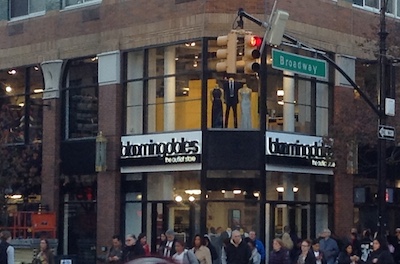Retailers’ stock values are plummeting, with stocks reaching historic lows as earnings falter.
Nordstrom stock stood at more than $82 a share on March 20, 2015, but on May 20, 2016, opened at $37.25, its lowest in almost six years, and its competitors have had even rougher fortunes. Retailers are trying a variety of strategies to get out of the rut, but broader economic turmoil has walloped the industry, and no clear solutions are visible.
“Retail stock performance reflects recent earnings reports and updated guidance,” said Marie Driscoll, CEO and chief consultant of Driscoll Advisors, New York. “Many retailers reported weak top line revenue performance, negative same store sales trends and contracting margins.
“At Nordstrom, comparable sales dropped 1.7 percent driven by a 5.4 percent comp store sales decline at Nordstrom‘s full price stores, where steep traffic declines penalized results along with broad-based category weakness online,” she said. “Both gross and operating margin suffered with promotions and the inability to leverage fixed costs. Moreover, Nordstrom management lowered fiscal 2016 earnings guidance 19 percent.
“A similar situation at Macy’s, with a negative 6.1 percent comp as Macy’s flagship locations continue to feel the loss of international tourist traffic and its center core businesses (handbags, watches and women’s shoes) were soft. Macy’s took down fiscal 2016 guidance as well, reducing the EPS (earnings per share) range 13-17 percent.”
Free fallin’
The fortunes of Macy’s Inc., which owns Bloomingdale’s, have been worse, with an open at $31 a share marking the lowest since late 2011. Hudson’s Bay Company, which includes Saks Fifth Avenue, hasn’t been so far below $15 a share since its first few months of public trading, in early 2013.
Even the new Yoox Net-A-Porter Group, immune to the mass discounting and overstocking by virtue of its online-only business model, has lost nearly a third of its value since its all-time high in December.
On one hand, these falls were not precipitated entirely by the retailers’ own doings. The initial descent began in July and August, when the Dow Jones fell around 2500 points in just two months; but retailers did not recover as readily as the rest of the market and were hit again around the turn of the calendar, when another precipitous drop occurred.
On the other hand, retailers’ earnings have not done them any favors. Nordstrom’s profit per share was noticeably lower for the group’s first quarter earnings this year than in 2015, and Macy’s fell more than 7 percent in revenue. Hudson’s Bay Company stood out with a strong fourth quarter, but its stock fell nonetheless.
While stocks have lost value, the United States dollar has gained in the international marketplace. But the stronger dollar means that the U.S., where these brands are most prominent, is no longer the go-to destination for fashionable and affluent international tourists. The resulting drop in revenue has forced these retailers to re-think their strategies.
Macy’s Group is betting on off-price stores to help increase sales, even introducing those for its high-end brands in major urban cities.
Department store chain Bloomingdale’s is serving a more cost-conscious clientele in New York with the opening of a flagship outlet store on the Upper West Side.
The first Bloomingdale’s outlet in any major city, the 25,000-square-foot store at 2085 Broadway sells off-price merchandise across apparel and accessories, jewelry and footwear for men, women and children. While it may seem a risky maneuver for a high-end retailer to open an outlet store within proximity of its brand flagship, Bloomingdale’s is anticipating this will only add to the range of customers it can serve within the city (see story).

Bloomingdale’s Upper West Side Outlet exterior
“Most softline retail is feeling deflationary pricing pressure with increased promotions, contracting profit margins as they execute omnichannel strategies and changing consumer preferences that focus on experiences, not product,” Ms. Driscoll said. “Even ownership is taking on new forms as the Internet has provided digital marketplaces of luxury and aspirational products in rental and consignment models as well as flash sales and online outlets.
“As retail undergoes rapid disruption amid these trends, investors are wisely adjusting market values,” she said. “However, retail stocks have outperformed the stock market in 2016, as reflected in a year-to-date 2.6 percent gain for the SPDR S&P Retail ETF versus the 1.4 percent gain for the S&P 500 (through May 19).”
Additionally, while omnichannel is a necessary component to reach and engage clientele, there is some suggestion that retailers may be going overboard.
As retailers strive to fill out their omnichannel capabilities, they may be investing in more than consumers expect, want or need, according to a recent report from A.T. Kearney.
From lightning fast fulfillment to in-store technology, certain additions may be unnecessary for retailers to win consumers’ loyalty and dollars. At the same time, one resource that has the power to drastically impact a retailer’s bottom line is largely ignored: its store associates (see story).
“I am ‘cautiously optimistic’ for the state of retail for the remainder of 2016,” said Ken Morris, principal, Boston Retail Partners. “The disappointing sales in the department store category will continue to persist until they figure out a way to attract younger shoppers to brands that have traditionally catered to the baby boomers.
“Today’s younger consumers are shopping discount brands and fast-fashion retailers because they don’t want to spend $200 on a sweater when they can get a similar one for $20 and wear it a few times and get a different style or color next month,” he said. “This is why we are seeing discount and off-price chains out-performing departments stores. They need to sell to my children and not my parents. Those retailers who don’t do so will be at their own peril.”
No end in sight
Department stores have been aggressively expanding their outlet retail footprints to capture discount sales from aspirational consumers, but are these off-price stores doing more harm than good?
Discount stores enable a retailer to reach more consumers at varying price points, but a growth strategy that favors off-price bricks-and-mortar may in time hurt the full-line store’s luxury image. This requires a delicate balancing act for retailers to retain their branding, positioning and pricing strategy (see story).
Similarly, brands must find ways to reach consumers when North America is not preferred market for international tourists. The problem extends beyond the retail sector, and some brands have taken steps to help attract a more global clientele.
In March 2015, French fashion house Chanel became the first to align global pricing for its signature handbags, an action that allowed the brand to move toward ecommerce.
As of April 8, the fashion house created equal pricing for three of its handbags, which significantly raised the prices in certain regions and dropped them in others. The harmonization helps reach consumers in their home markets rather than requiring them to travel to a country where the brand is prominent (see story).
There is no easy fix for declining stock prices or slumping earnings, but retailers that look for creative solutions to win new consumers have reason for optimism.
“While macro retail sales were down slightly for the first three months of 2016, April had the biggest monthly increase since March 2015,” Mr. Morris said. “The financial markets react to the latest quarterly financial results and the stock prices of those retailers that had a rough first three months got hammered. Over the long haul, I believe there will be a correction and we will see the retail sector generally move upward with those retailers who are thinking outside the box being the winners.”
“There are a lot of dynamics impacting retailer stock prices and the economy in general, but the the negative sales results are not pervasive across all retailers – some segments are doing better than others,” he said. “While many department stores have reported negative or less than stellar results recently, there are several retailers that are doing well.
“Amazon sales were up 28 percent in the latest quarter, its fastest growth since 2012, and other retailers doing well are Zara (up 15 percent), T.J. Maxx (up 7 percent) and Home Depot (up 6.5 percent). Home improvement and discount segments seem to be doing the best lately. Retailers who listen to their customers win regardless of the economic conditions.”
from
http://redirect.viglink.com?u=http%3A%2F%2Fredirect.viglink.com%2F%3Fu%3Dhttps%253A%252F%252Fwww.luxurydaily.com%252Fretailer-stocks-nosedive-as-earnings-disappoint-with-no-quick-fix-in-sight%252F%26amp%3Bkey%3Dddaed8f51db7bb1330a6f6de768a69b8&key=ddaed8f51db7bb1330a6f6de768a69b8



No comments:
Post a Comment